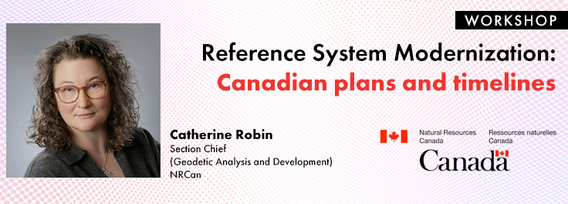Reference System Modernization: Canadian plans and timelines

My Session Status
Modernizations of this magnitude occur roughly every 50-100 years. In Canada, these updates are coordinated with the provinces through the Canadian Geodetic Reference System Committee (CGRSC). CGRSC members are now working towards the adoption of NATRF2022 and CGVD2013 in the provinces by 2030. If successful, this will mark the first time that federal and provincial governments will have formally adopted unified reference systems across all jurisdictions since before the use of GPS became widespread.
In this presentation and discussion, we will review motivation and plans for federal modernization in 2025 and considerations for provincial adoption for 2030. The presentation will highlight opportunities and challenges for the geospatial community in particular.
Who's Attending




